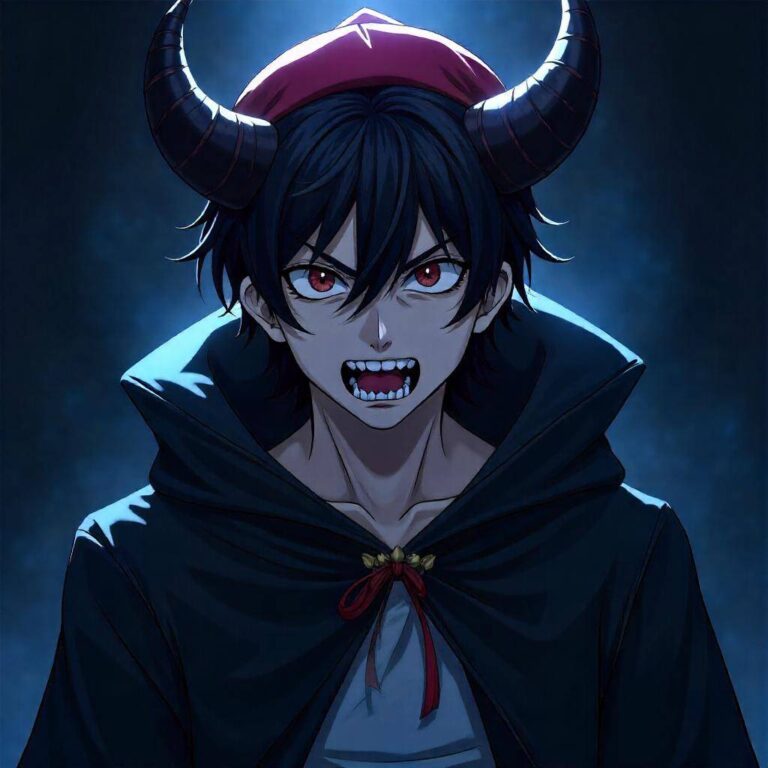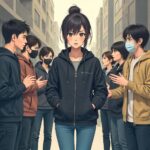Reader’s Question:
Who is the Upper Moon demon that appears in the flashback scene of Season 4, Episode 3 of Demon Slayer? It’s the demon with greenish-yellow hair that shows up at 8:26. Before that, it was the brothers from the Entertainment District arc, right?
Understanding the Narrative Depth of Demon Slayer:
A Deep Dive into Character Flashbacks
As a university student majoring in psychology and someone who appreciates the intricacies of narrative storytelling in anime, it is fascinating to explore the layers of character development and the psychological underpinnings that inform the narratives in series like “Demon Slayer.” In this analysis, we will delve into the character of Gyutaro, the Upper Moon demon from the flashback scene in Season 4, Episode 3, and investigate the implications of his appearance, alongside the broader storytelling techniques employed in the series.
Contextual Background: The Entertainment District Arc
The Entertainment District arc, which follows the Mugen Train arc, serves as a critical narrative point within the “Demon Slayer” manga and anime series. This arc introduces viewers to a new setting and characters, particularly focusing on the interactions between the Hashira, Tanjiro, and the powerful Upper Moon demons. Gyutaro, alongside his sister Daki, represents a significant challenge to the protagonists, embodying both physical power and deep-seated emotional trauma. In the flashback scene referenced, Gyutaro appears in a moment that ties back to his prior confrontation with the Hashira, Uzui Tengen. It is essential to acknowledge that while the scene may seem like a mere recollection, it is layered with thematic significance related to the characters’ pasts and the psychological scars they bear. In fact, Gyutaro’s character is intricately tied to the broader themes of family loyalty, identity, and societal rejection.
Character Psychology: Gyutaro and the Impact of Trauma
From a psychological perspective, Gyutaro is a compelling character shaped by his traumatic upbringing. Growing up in a harsh environment, he faced societal rejection and violence, which led to his eventual transformation into a demon. Such backstory is not merely for shock value; it provides a psychological framework that explains his ruthless behavior and deep-seated need for survival and loyalty to his sister Daki. This trauma-response dynamic is a critical aspect of his character development. Gyutaro’s greenish-yellow hair and menacing demeanor can be seen as symbolic representations of his inner turmoil. Furthermore, his relationship with Daki is reminiscent of sibling dynamics often seen in psychological studies, where extreme familial bonds emerge in the face of adversity. Their relationship can evoke sympathy from viewers, as they navigate their shared trauma and harsh realities together. In analyzing Gyutaro’s character, we can see how his past influences his actions. For instance, he exhibits protective instincts towards Daki, which are indicative of a trauma-bonded relationship. This phenomenon is prevalent in psychology, where individuals who endure stress together often develop codependency. This insight allows viewers to empathize with Gyutaro, even as he commits heinous acts, complicating the traditional notions of good versus evil in storytelling.
Storytelling Ethics: The Responsibility of Narratives in Anime
As creators, there is an ethical responsibility to portray trauma and its effects with sensitivity and depth. While anime often dramatizes violence and suffering, the narratives must also provide insights into the psychological complexities of characters, such as Gyutaro. The portrayal of trauma must not only serve as a plot device but also encourage viewers to reflect on the implications of such experiences. In “Demon Slayer,” the creators strike a balance between delivering compelling action and addressing deeper psychological themes. Gyutaro’s backstory provides an opportunity for critical reflection on societal issues such as neglect, abuse, and the resultant cycle of violence. For creators, it is vital to approach these themes thoughtfully, ensuring that they are not trivialized or sensationalized. Furthermore, the storytelling choices, such as the use of flashbacks and character dialogue, enhance the emotional weight of the narrative. For instance, Gyutaro’s recollection of past trauma creates a layered understanding of his motivations and conflicts. This technique not only enriches character development but also engages the audience in a more profound discourse about the impact of trauma on identity and morality.
Industry Analysis: The Cultural Impact of Demon Slayer
“Demon Slayer” has become a cultural phenomenon, resonating with audiences worldwide. Its exploration of complex themes such as family, loyalty, and redemption speaks to universal human experiences. The series has successfully tapped into the zeitgeist, capturing the imagination of viewers and prompting discussions about mental health, resilience, and the consequences of trauma. This cultural impact extends beyond mere entertainment; it has led to increased dialogue about the representation of mental health issues in media. As an academic, I find it vital to encourage such discussions, as they can foster empathy and broader understanding of the psychological struggles depicted in narratives. Moreover, the success of “Demon Slayer” in the anime industry highlights a growing trend toward more character-driven storytelling. While action and fantasy elements remain at the forefront, audiences increasingly seek narratives that explore the emotional and psychological intricacies of characters. This shift presents an opportunity for creators to delve deeper into the human condition, offering relatable experiences alongside fantastical elements.
Practical Insights for Creators and Viewers
For creators, understanding the psychological aspects of character development is essential. Here are some actionable insights for integrating these elements into storytelling: 1. Character Backstory: Develop rich backstories that inform current behaviors and motivations. Consider how trauma shapes a character’s identity and choices. 2. Empathy in Writing: Strive to portray characters with empathy, even when they engage in morally questionable actions. This approach encourages viewers to engage thoughtfully with complex characters. 3. Symbolism and Themes: Use symbolism to reflect characters’ inner struggles. Colors, settings, and behavioral patterns can all contribute to a deeper understanding of their psyche. 4. Engage in Dialogue: Foster conversations around the themes presented in the narrative. Encourage audiences to reflect on the ethical implications of character actions and the societal issues at play. 5. Sensitivity to Topics: When addressing themes of trauma or violence, prioritize sensitivity and depth in portrayal. Ensure that narratives promote awareness rather than sensationalism. For viewers, engaging with stories like “Demon Slayer” offers an opportunity for introspection and critical thought. Here are some practical takeaways: 1. Reflect on Characters: Consider the psychological motivations behind characters’ actions. What past experiences shaped their current behavior? 2. Engage with Themes: Think critically about the themes presented in the narrative. How do they relate to real-world issues, and what can they teach us about the human experience? 3. Discuss with Others: Engage in conversations with fellow fans about character development and the ethical implications of storytelling. Sharing perspectives can enrich your understanding. 4. Appreciate Complexity: Recognize that characters can embody both light and darkness. Embrace the complexity of human nature reflected in these narratives. 5. Support Thoughtful Content: Advocate for and support media that thoughtfully explores psychological themes and character complexities.
Conclusion: Navigating the Depths of Narrative in Demon Slayer
The character of Gyutaro in “Demon Slayer” serves as a powerful reminder of the intricacies involved in character development and the psychological factors that influence behavior. By combining action-packed storytelling with profound themes of trauma and resilience, the series not only entertains but also educates its audience on the complexities of human experience. As we continue to explore the rich narratives within anime, let us embrace the opportunity to engage with these stories thoughtfully, fostering greater understanding and empathy in our interactions with media. I invite readers to share their experiences with “Demon Slayer” and other anime that have sparked similar reflections, as we collectively navigate the landscape of storytelling and its impact on our lives.



